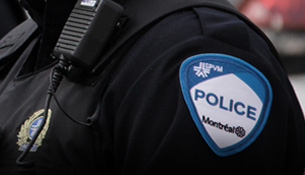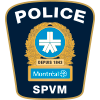
Runaway Child
We use the term “runaway” to refer to a person who, after verbally or behaviourally indicating a desire to run away, leaves his or her place of residence, foster family, or group home, or fails to return after a planned absence. There may also be evidence that the person has left of his or her own accord, such as taking money or clothing with them.
The unplanned, spontaneous departure
Young people may spontaneously decide to run away after experiencing an incident, a failure, a conflict or an intense emotion (such as fear of facing the consequences of their actions, anger or grief). In these circumstances, running away seems to be the only possible solution; it may even feel like an escape hatch allowing them to avoid facing up to their problems.
Most runaways will run away again if the situation that triggered their action is not resolved.
The planned, well-thought-out departure
On the other hand, a young person's flight may be well thought out and planned. In such cases, he or she is often looking for a new way of life. Flight becomes a response to one or more needs that are not being met, such as freedom, validation, experimentation, independence and adventure. Running away may also be a way of escaping problems, an act of defiance or an attempt to find themself. Finally, running away may represent a way of calling for help or adapting to a situation that is too difficult or full of suffering to cope with.
What should you do if your child runs away ?
Do some quick checking.
- For example, contact your child's best friends and a school representative to find out the last place where the child was seen, places usually frequently to and the people she or she hangs out with. Check the child’s room and the house to identify any items the child may have takenher.
Inform the police as soon as possible.
- As soon as you have enough clues leading you to believe that your child has run away, call 911.
- A Police Officer will visit you to collect all the information needed to trace your child. This Police Officer will produce an event report with a reference number that you should use when you contact the investigator assigned to your case. In addition, the SPVM will circulate the runaway notice to all police departments in the province.
- Posting a runaway notice demonstrates that you love your child but that you do not agree with their decision and that you will not let your child remain in a situation that could be dangerous.
- Reporting a runaway to the police doesn't necessarily mean that your child will be taken in charge by the Youth Protection Division (Direction de la protection de la jeunesse, DPJ). DPJ caseworkers only become involved when a child is in a compromised situation, that is, a situation that compromises his orher safety or development and from which the child’s parents can't or don't provide protection.
Keep searching for clues.
- Check your home
- Contact your child's friends and talk to their parents
- Contact the members of your extended family
- Call or go to the places where your child hangs out
- Contact the resources that can help you find your child, such as the Missing Children's Network, Parents en marge de la rue or any other similar organization
- Contact resources that provide shelter for young people, such as En marge 12-17 and The Bunker, to find out whether they have seen your child
Prepare to negotiate the return.
Take care of yourself and your family.
- Take care of your physical health as well as your psychological health. Speak to your friends. Take the time to relax. Spend time with the people close to you.
- Seek help, if necessary (consult a resource).
If your child has run away, remember that you are not the only person who has had to face this problem. Don't isolate yourself: ask for help.
What should you do if your runaway child calls you ?
Make sure he or she is safe.
- Ask closed (yes-no) questions, such as "Are you safe?" or "Can you talk freely?" Ask the child for as much information as possible about the danger and the place where the child is, so you can provide help. Provide this information on to the SPVM by calling 911.
Keep contact and remain calm.
- Avoid blaming the child, making promises, using threats or blackmail, insisting that if the child refuses to tell you where he or she is, or going to look for the child yourself if he or she is in a shelter for minors.
- Identify your emotions (e.g., concern, anxiety, sadness).
Try to understand why your child ran away and find solutions.
Suggest telephone appointments if your child doesn't want to come back.
Suggest meeting your child in a neutral space.
What should you do when your child comes back again?
Call 911 to tell the police your child has returned.
- A Police Officer will meet with you to confirm the child's location and close the file.
Stay in control of your emotions. Don't let your emotions get the better of you in discussions with your child.
Welcome your child.
Open the door to communication and look for solutions.
- You can contact your neighbourhood CIUSS to get help from professionals.
If necessary, think about different options for the return.
The best way to avoid having your child run away again is to find a solution to the problems that caused your child to initially leave.



